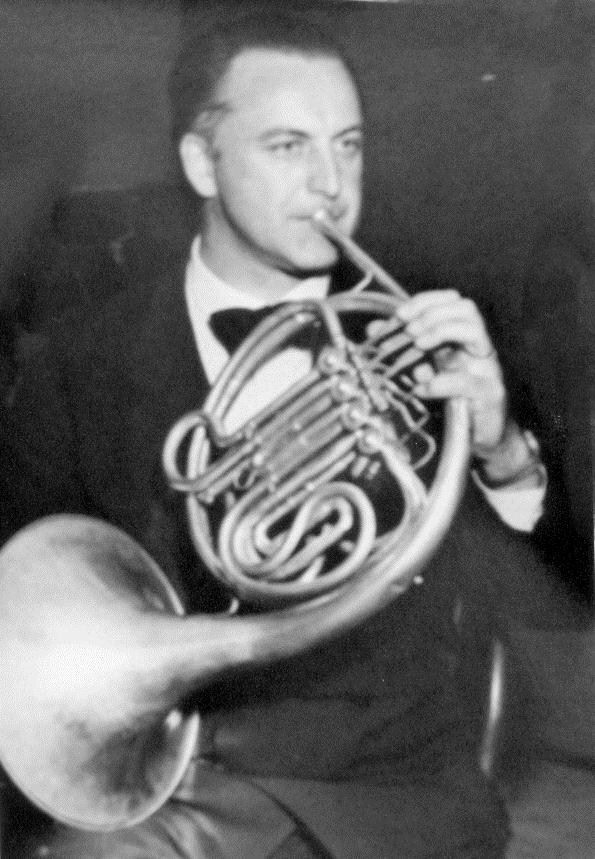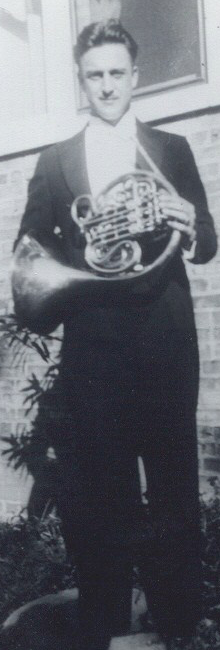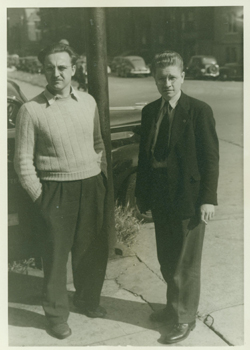 |
|
Charles Misare was born on September 12, 1911 in Chicago, Illinois, the youngest of twelve children of Adolf and Anna (Rehak) Misar. His parents and six of his siblings were born in Bohemia. His father immigrated to the United States in 1904 and the rest of the family joined him the following year. 1 |
|
Charles "Chuck" Misare was a 1931 graduate of the J. Sterling Morton High School in Cicero, Illinois. In addition to the band and orchestra he was a member of the baseball, tennis, and wrestling teams.2 A recognized young talent in Chicago, he was featured in an "obbligato for French horn" at the morning service at the University of Chicago chapel in Hyde Park on July 17, 1931. On August 18 the following year he performed with the Philharmonic Woodwind Quintet at the Arnwahl Studios. Mr. Misare majored in chemistry at Northwestern University. Even before he obtained his degree he began his career as a professional horn player. On May 27, 1935 he appeared with the New Art Woodwind Quintet founded by Manoah Leide-Tedesco featuring an interesting program of compositions by Hindemith, Ibert and Sowerby, plus some arrangements of Bach and Scarlatti by Mr. Leide-Tedesco. |
 In the above photo Mr. Misare
is holding a different horn than the Geyer model shown
at the top, although it has not been positively
identified. Below, he is shown with his colleague in
the Chicago Opera Company, Charles
Foreman, in 1940.
 |